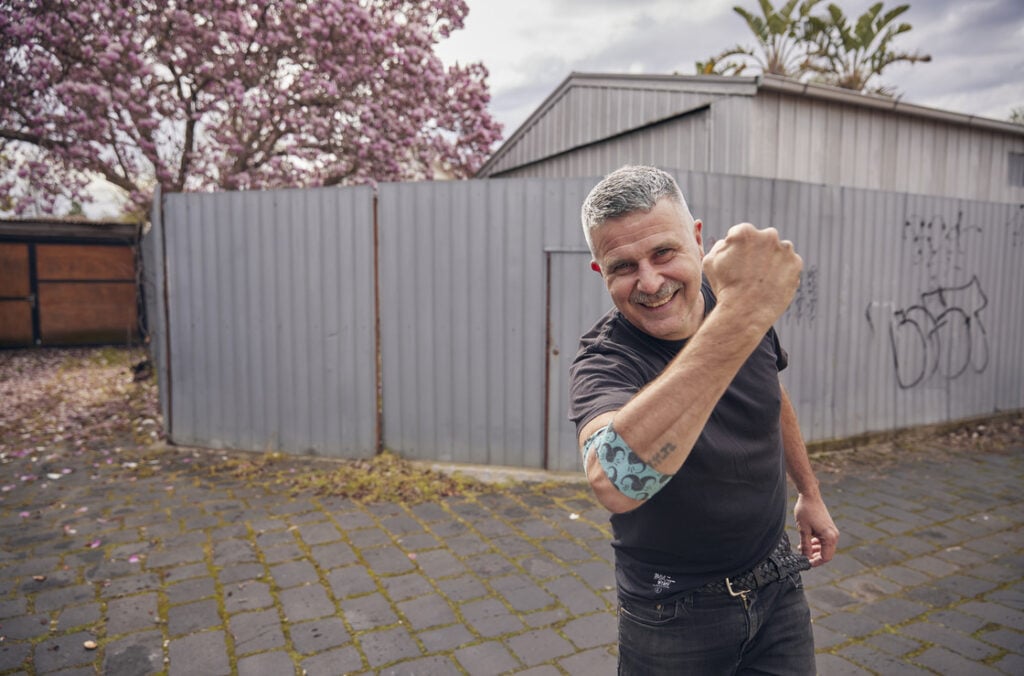Demystifying the Process: The A to Z of Blood Donation
If you’ve never given blood, it can be a bit of a daunting process, but the benefits undoubtedly outweigh the nerves involved
If you’ve never given blood, it can be a bit of a daunting process. The benefits undoubtedly outweigh the nerves involved, and you’ll be left feeling as though you’ve helped out your fellow man, but new donors might be left feeling a little unsure of what to expect.
This Movember, Australian Red Cross Lifeblood is joining forces with the global initiative for their True Colours campaign, encouraging everyone to roll up their sleeves and donate blood to support men’s health. As it stands, a third of men will require blood in their lifetime, but only one in 30 will donate blood. Put simply, it’s time to bridge that gap and increase donations.
With that in mind, we’re taking a look back at the blood donation process and hoping to demystify things for new donors, and going through what you need to know to ensure you’re informed ahead of your first donation session.
Why Should I Roll Up My Sleeves And Donate?
According to the Australian Bureau of Statistics, out of the top 20 leading causes of death for men in Australia, three of the top four include the likes of heart disease, lung and throat cancers, and blood clots (including strokes) – all of which are issues which can require blood products during treatment.
Currently, Australia needs more than 1.7 million donations every year just to meet demand; that’s four every minute. To put it in simple terms; Australia needs blood, and there are simply not enough people donating in order to meet demand. So we need to start increasing those numbers.
Who Can And Can’t Donate?
The good news is that most people between the ages of 18 and 75 are able to donate. Even those taking medications are, in many cases, able to donate providing they are feeling well and healthy. Pregnant women are unable to donate until the completion of their pregnancy.
Love Music?
Get your daily dose of everything happening in Australian/New Zealand music and globally.
If you’ve had a tattoo at an Australian licensed tattoo parlour you can donate plasma straight away, otherwise it’s only a 7 day wait before you can donate blood. Health questionnaires will be asked prior to donation in order to ensure your eligibility, including questions related to recent travel, other health problems, and other potential things that may block you from donating. If you have any concerns about whether you’re eligible, check out the Lifeblood website.

How Will My Blood Be Used?
Lots of ways. When you’re donating blood, you’re actually donating three components; red blood cells, platelets, and plasma.
Over 50% of your blood is plasma, which is the liquid portion of the blood and what keeps the red cells and platelets moving throughout our bodies. A plasma donation can be used in 18 life-giving ways such as to treat numerous bleeding disorders, severe burns, and also to aid the treatment of shock.
You can also give a specific platelet donation, but only men, which may seem strange but is due to a serious condition that can occur which is more commonly found in women. Platelets are used in the clotting process, including the treatment of cancer, aiding in organ transplants, and helping in the surgical process.
Red blood cells make up the remainder of your donation, and these are the ones that are used in the most varied ways. 34% of donated red blood cells go to fight cancer and blood diseases, 19% towards anaemia and other needs, and 18% towards heart, organ, and other non-orthopaedic surgeries.
13% of the red blood cells go towards stomach, kidney, and other diseases, 10% towards fractures and joint replacements, 4% helps pregnant women, new mothers, and young children, and the remaining 2% goes to help those involved in road incidents and other traumas.
What Does A Blood Donation Entail?
The actual blood donation process isn’t much different to any time you might have been required to have blood drawn for a medical process. The only real difference is that it takes a bit longer.
Once you’re seated comfortably, the trained phlebotomist will insert a cannula into a vein on your arm, beginning the donation process. Roughly 470ml of blood will be taken (equivalent to about 8% of your total volume), and the whole process will take around ten minutes.
What Should I Expect From My First Session?
It’s nowhere near as daunting as it may sound. Once you arrive at your donor centre, the sign-in process will be followed by a brief meeting in which your eligibility will be discussed. Once you’re given the all-clear to donate, you’ll be called over to begin the process. Once sat in a comfy chair, the donation will begin, and after around ten minutes, the phlebotomist will remove the cannula and make sure you’re not dizzy, or suffering any adverse effects.
From there, you’ll be asked to sit for a few minutes to make sure you’re recovering well. A small snack or drink will be provided, then once you’ve sat for the requisite time, you’re free to head out and go on with your day.
Will My Blood Be Tested Before Use?
Yes. We’re testing it for the safety of the recipient but also to find out about possible immunities. Should anything abnormal be detected – including infections, low white blood cell counts, etc. – you’ll be informed and given the chance to check in with your GP.
This Movember, roll up your sleeves for men’s health. Search Lifeblood to book a donation today, and help make a difference in the lives of those who need it.





































